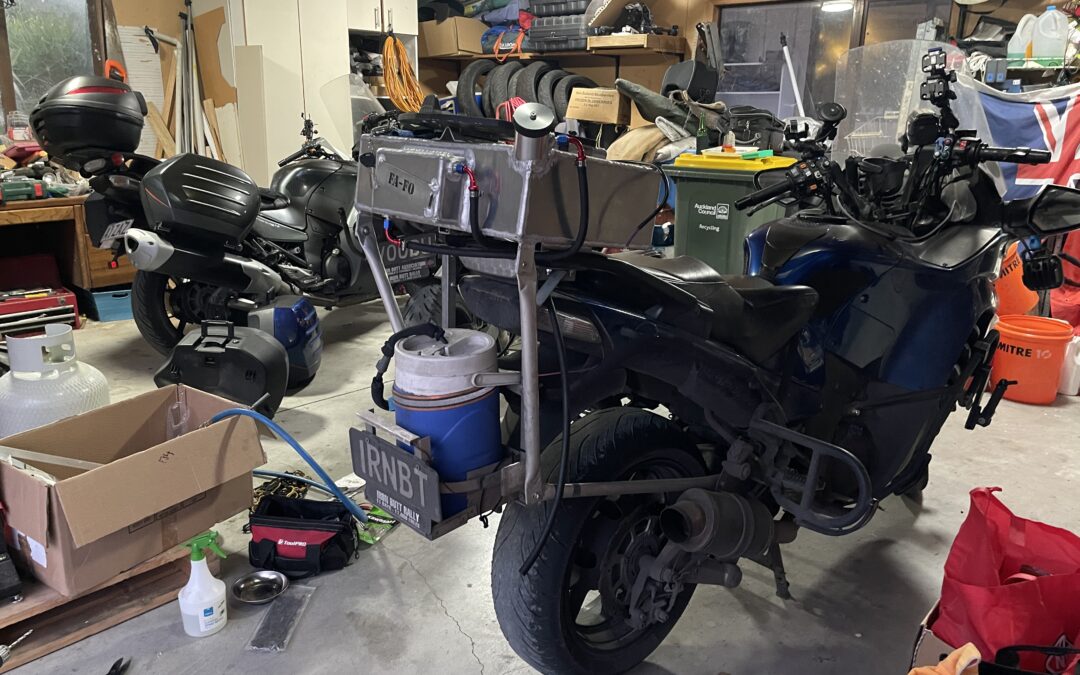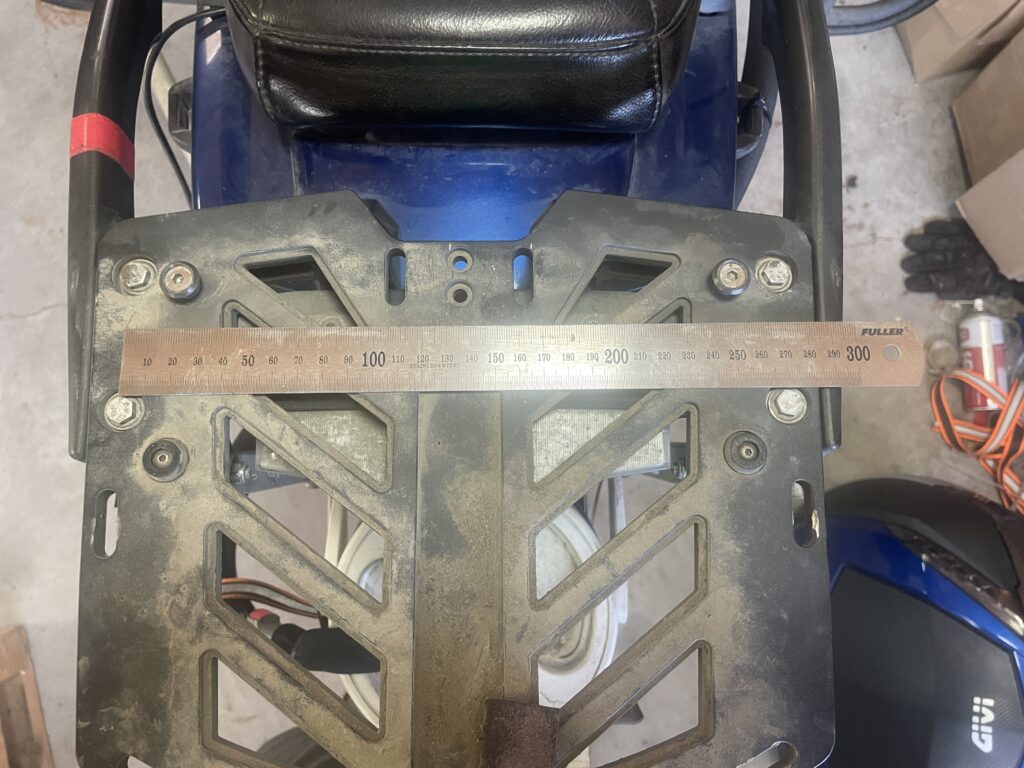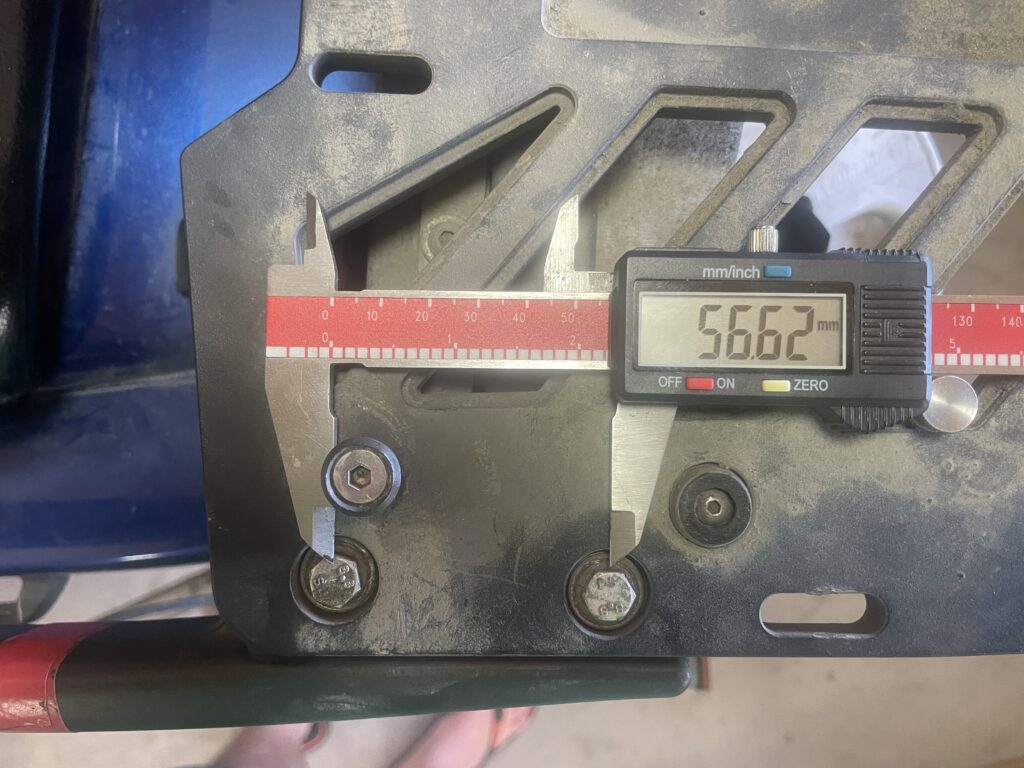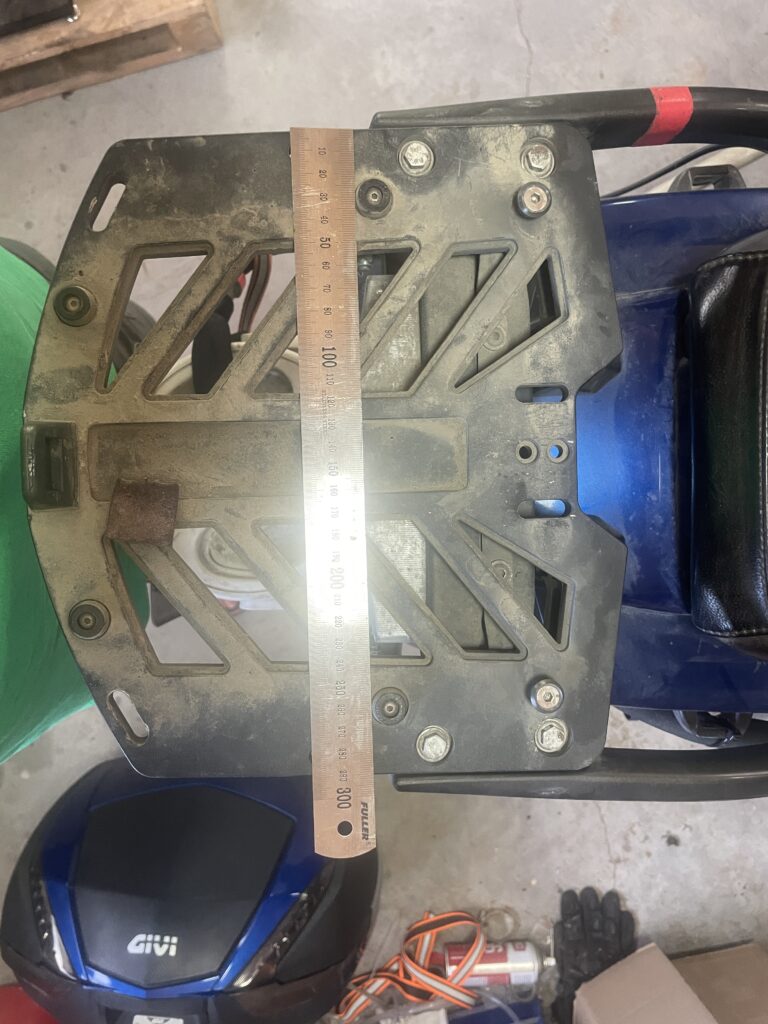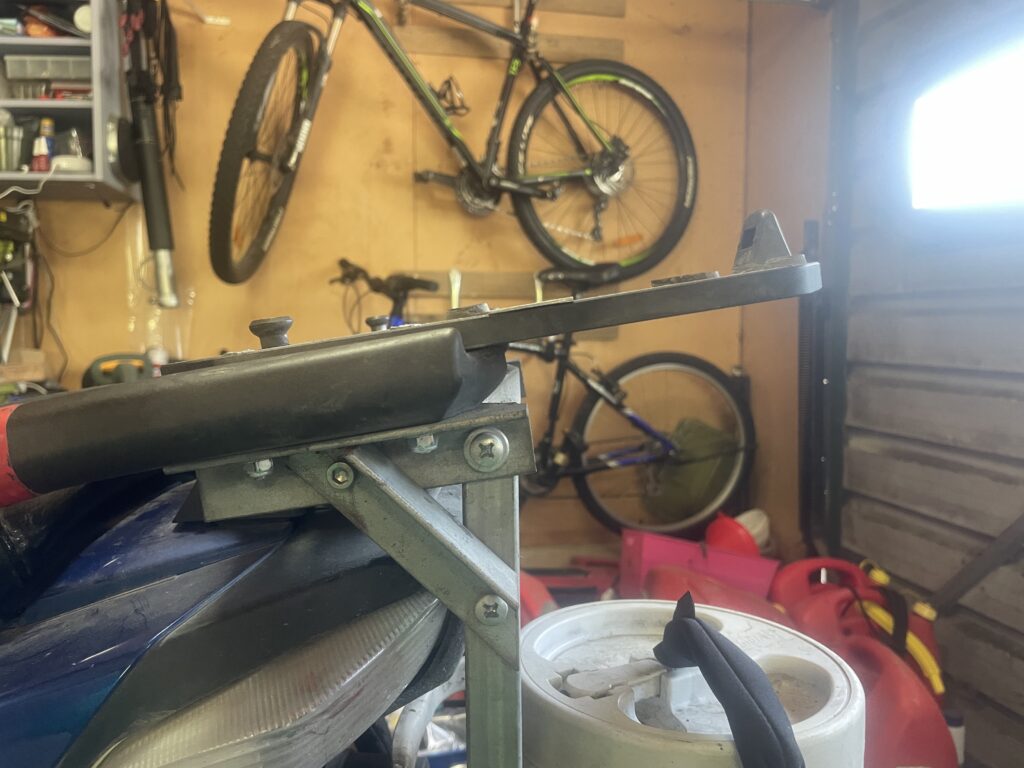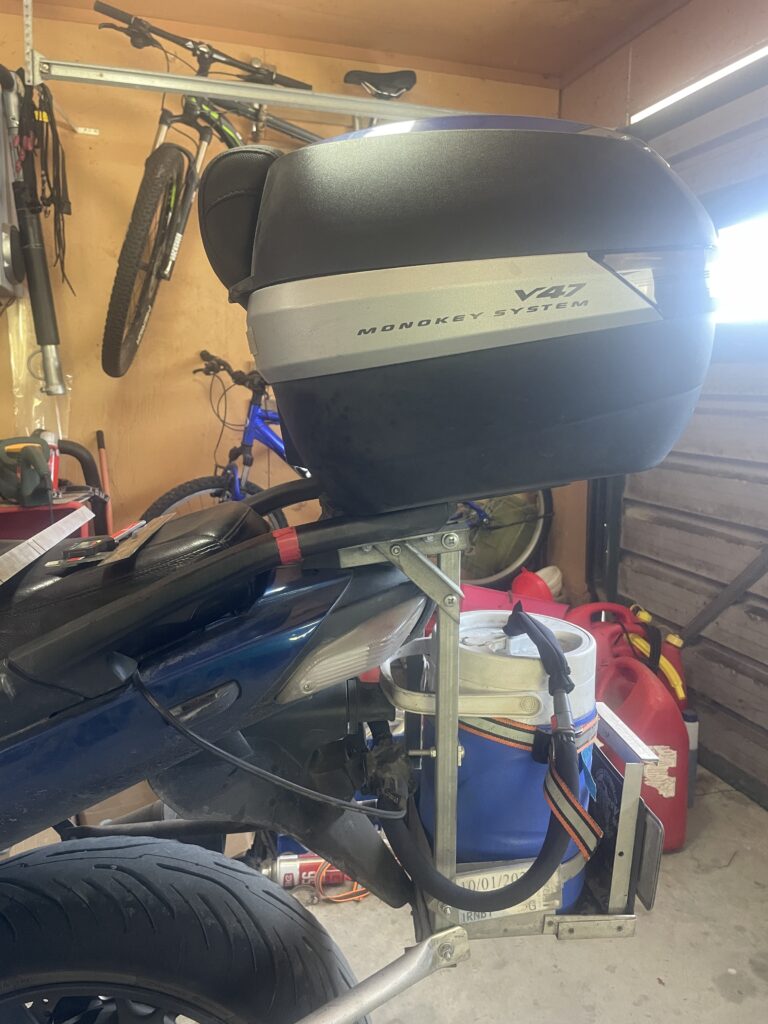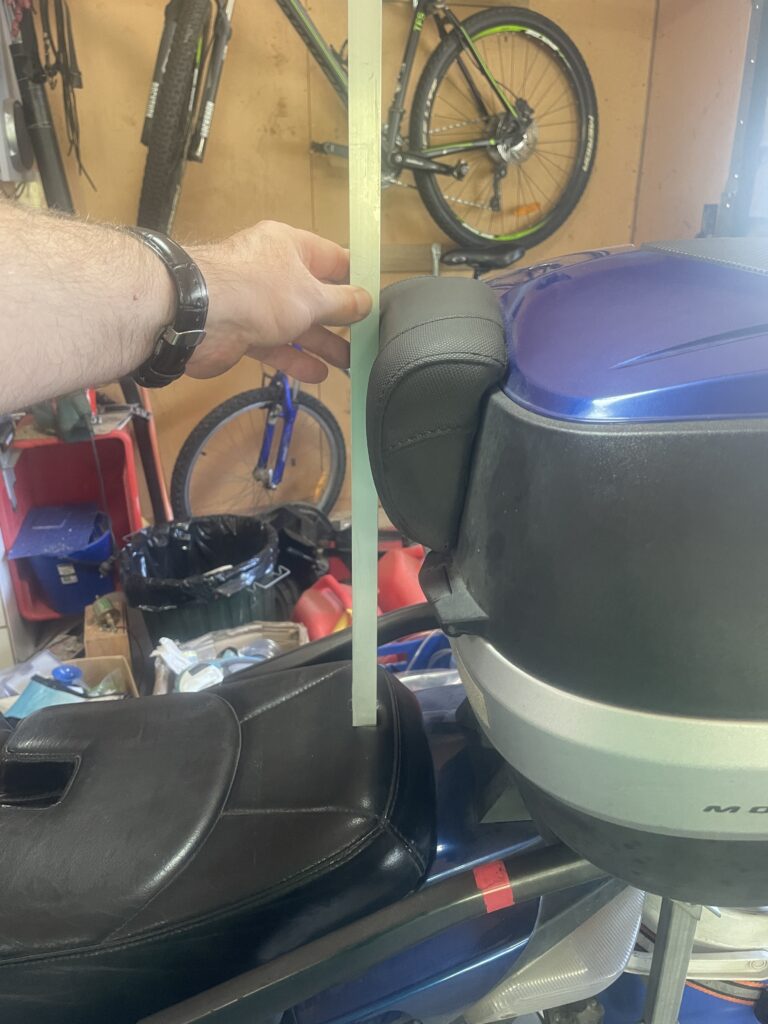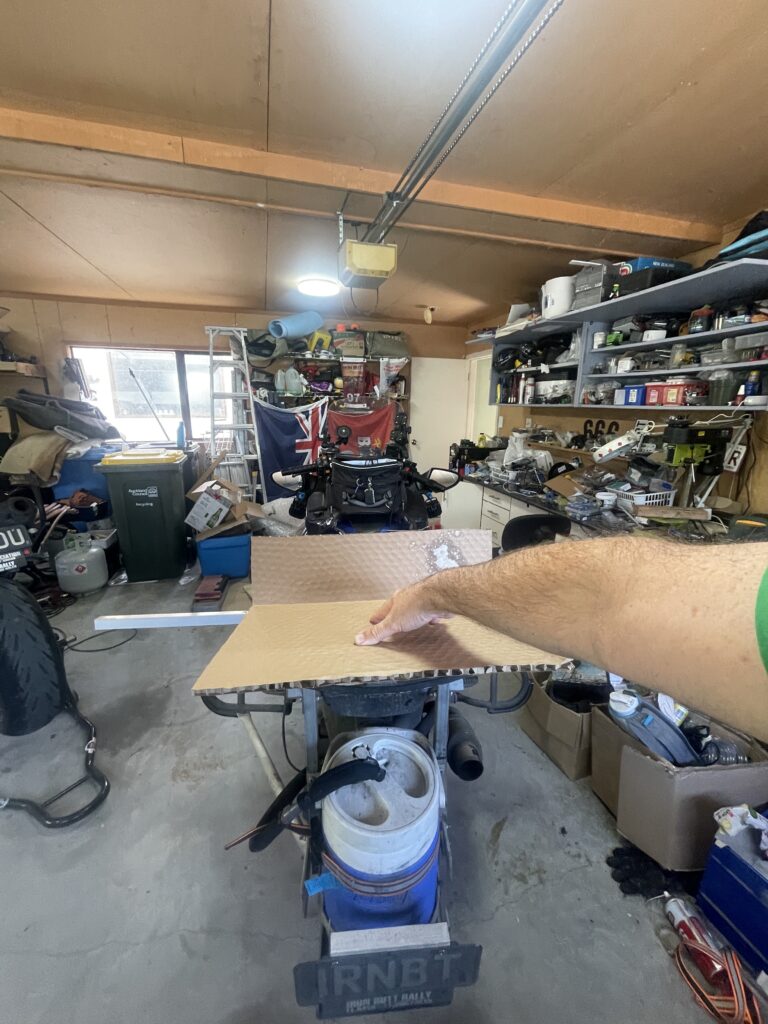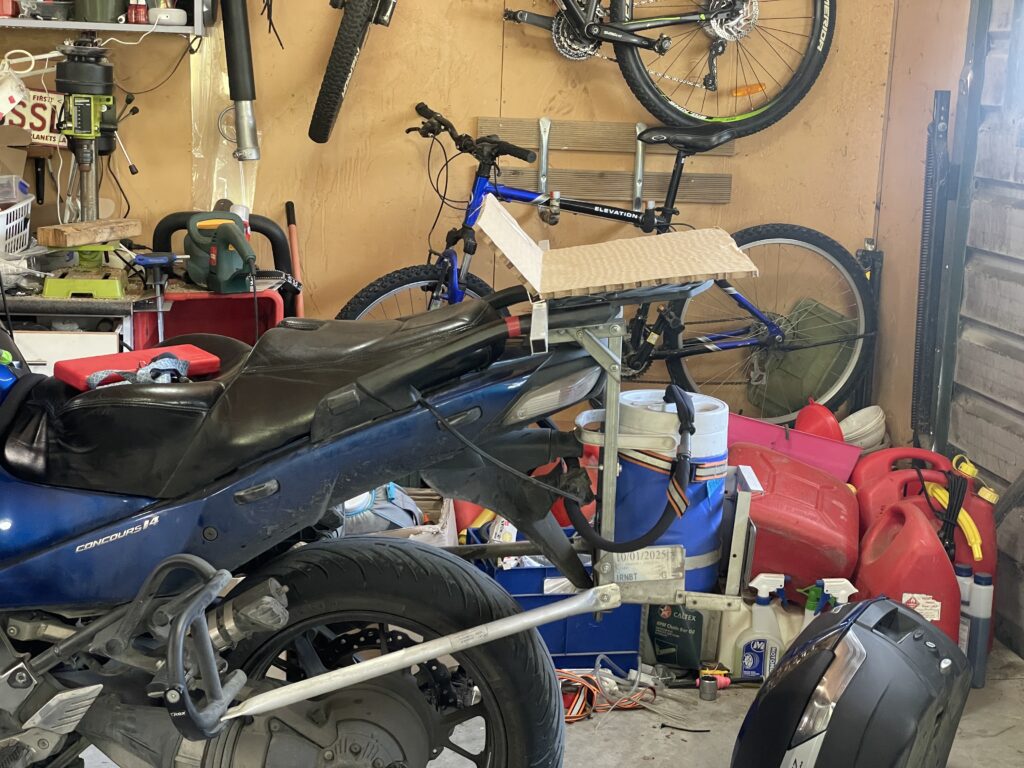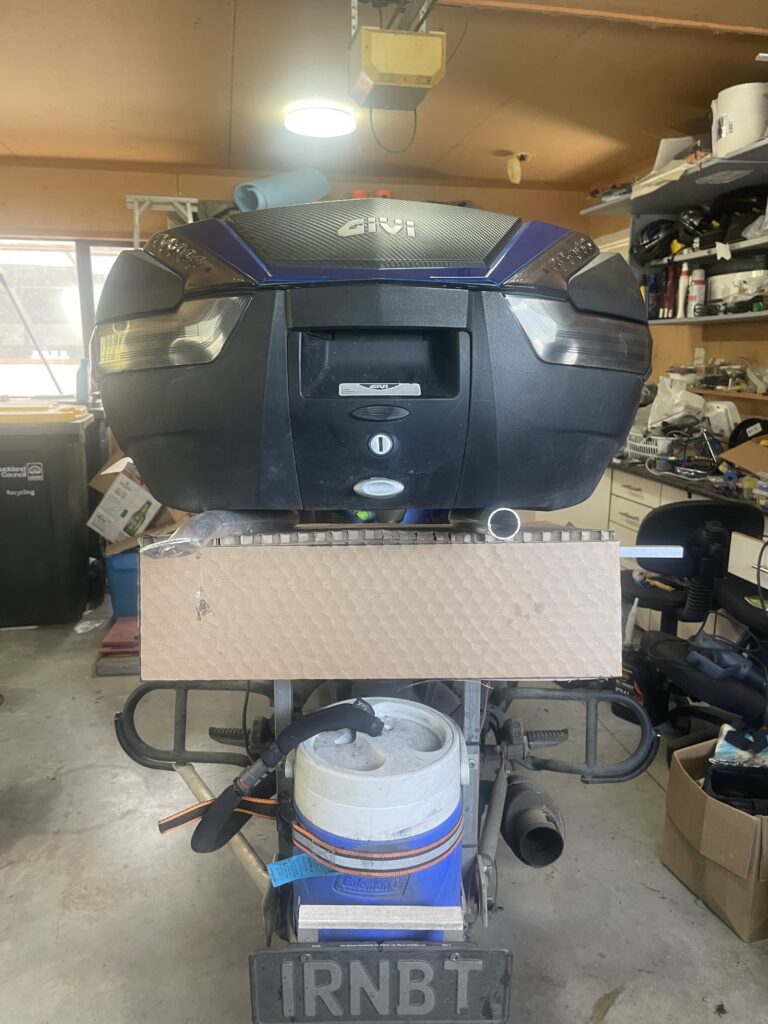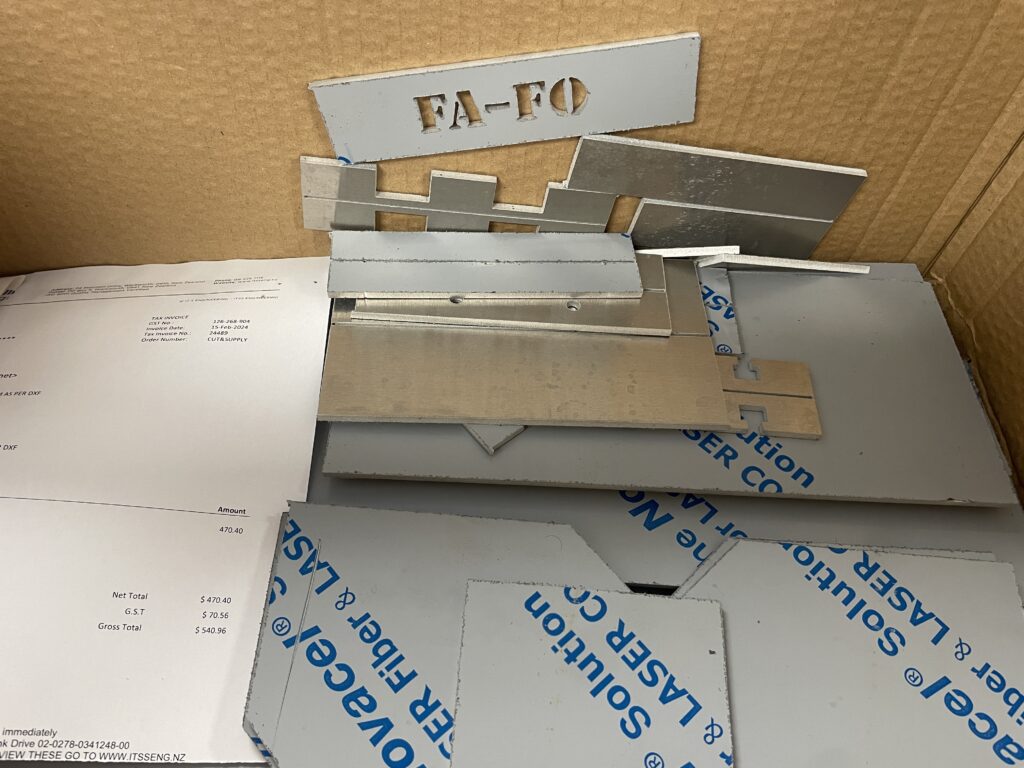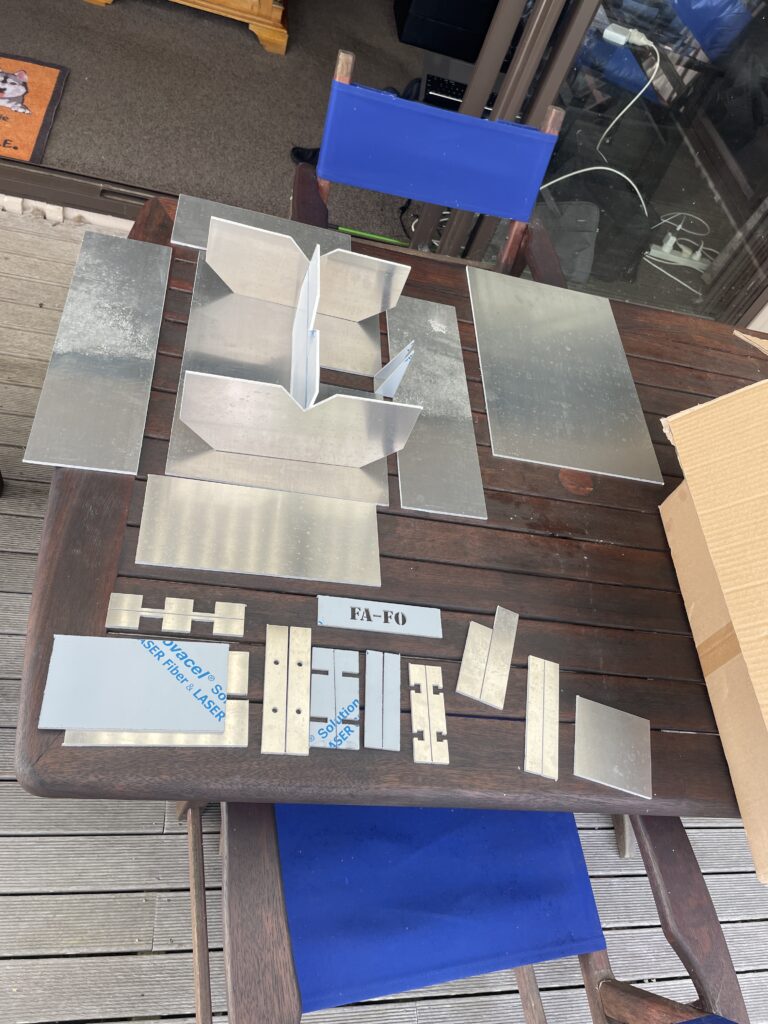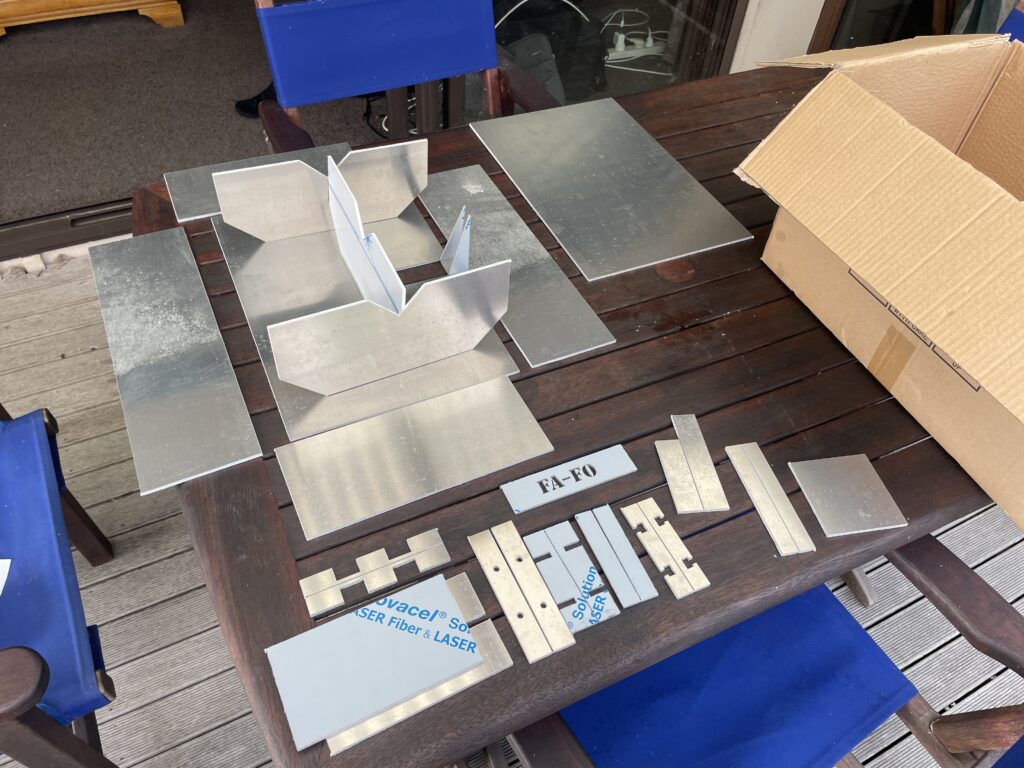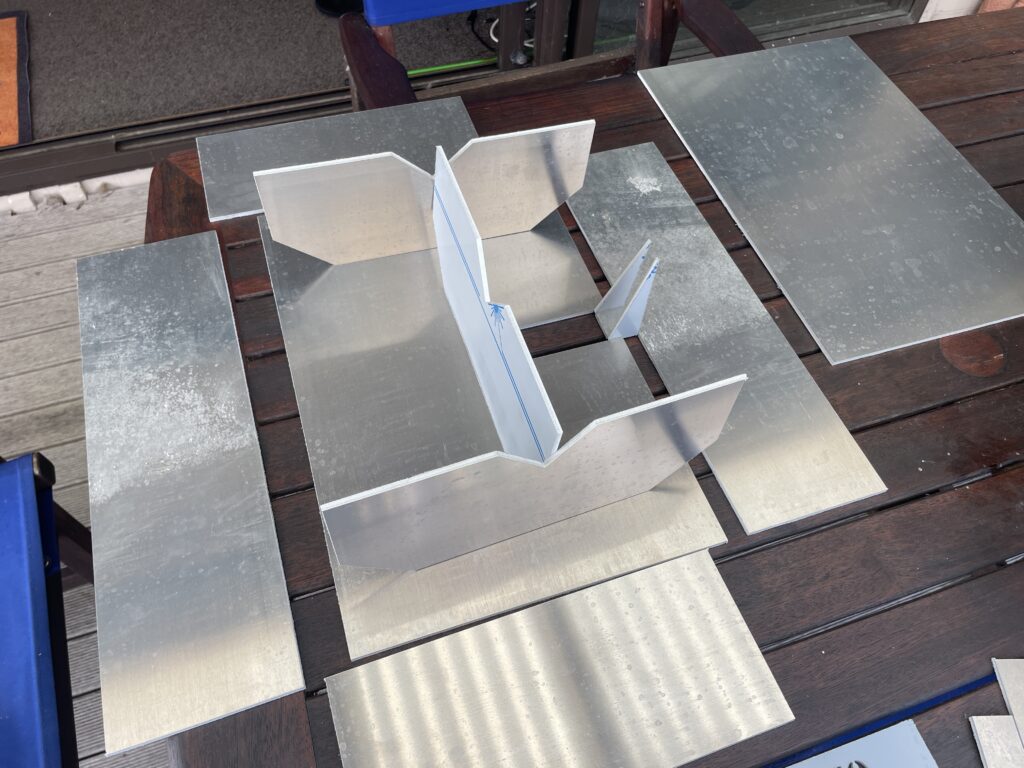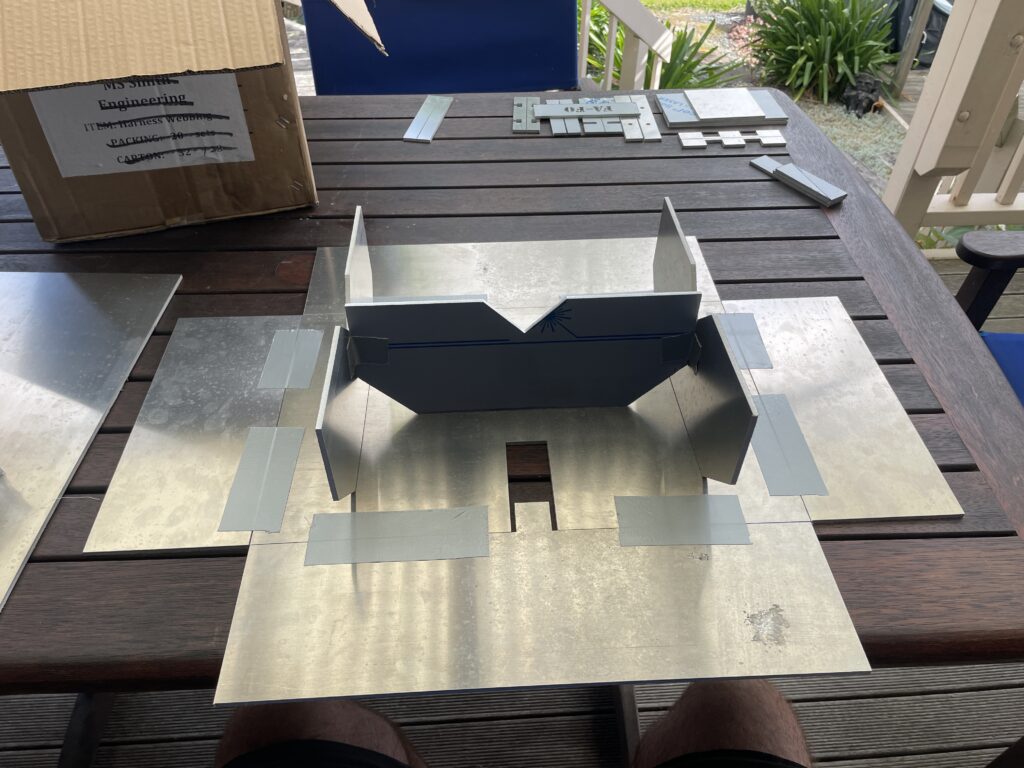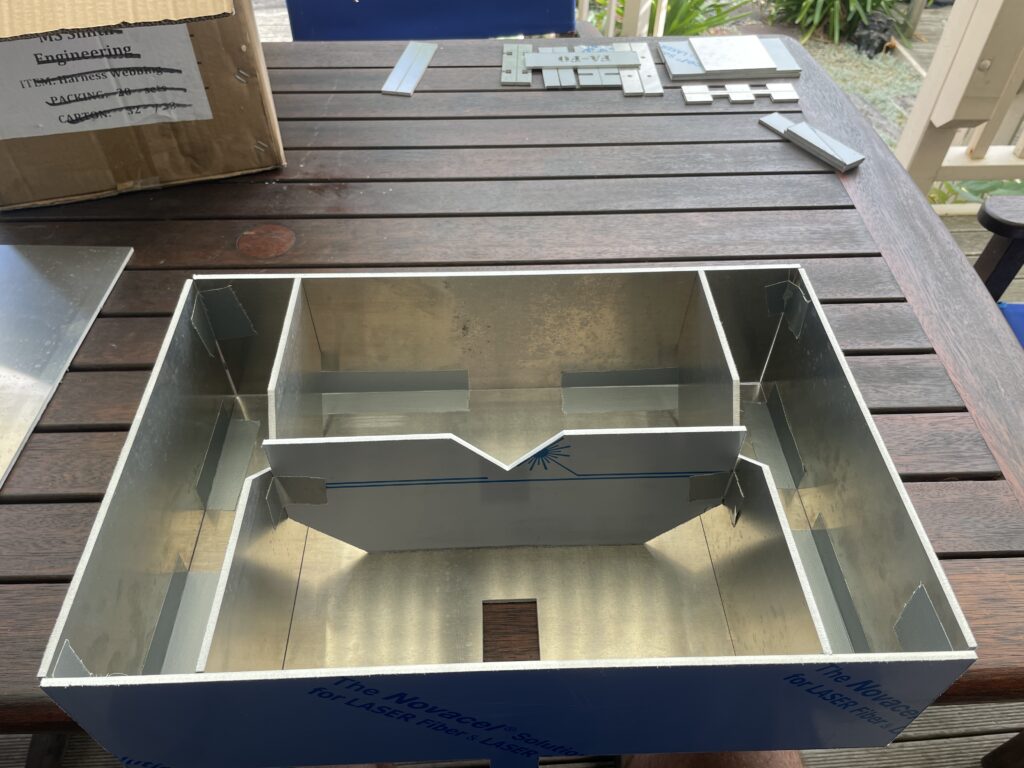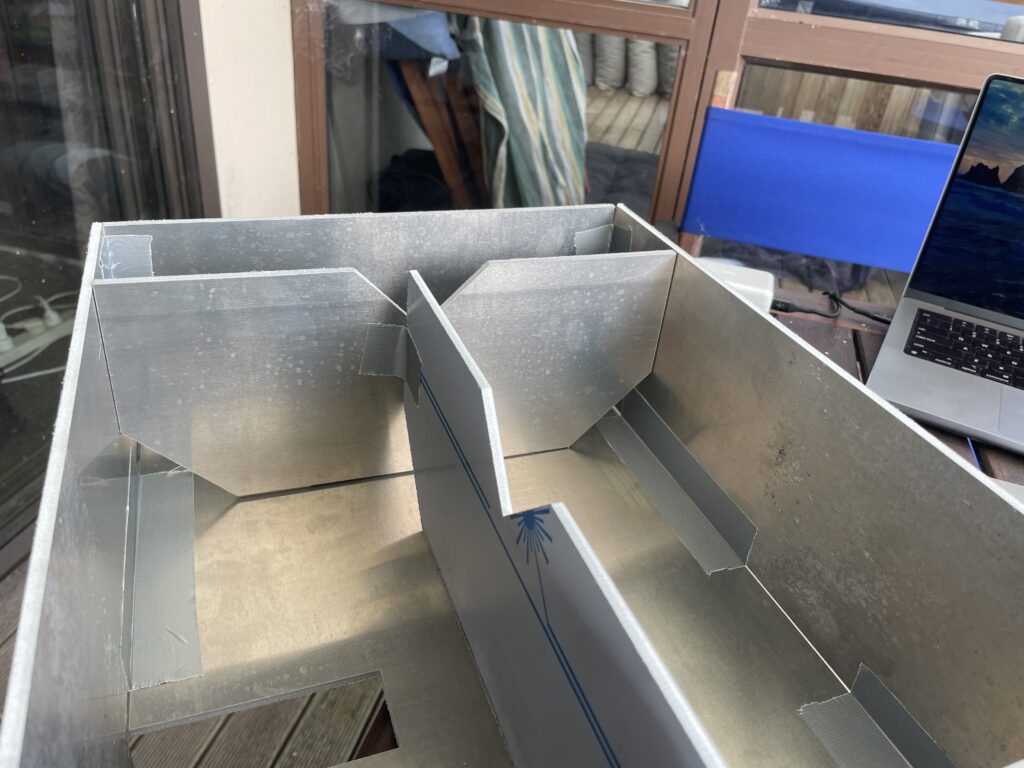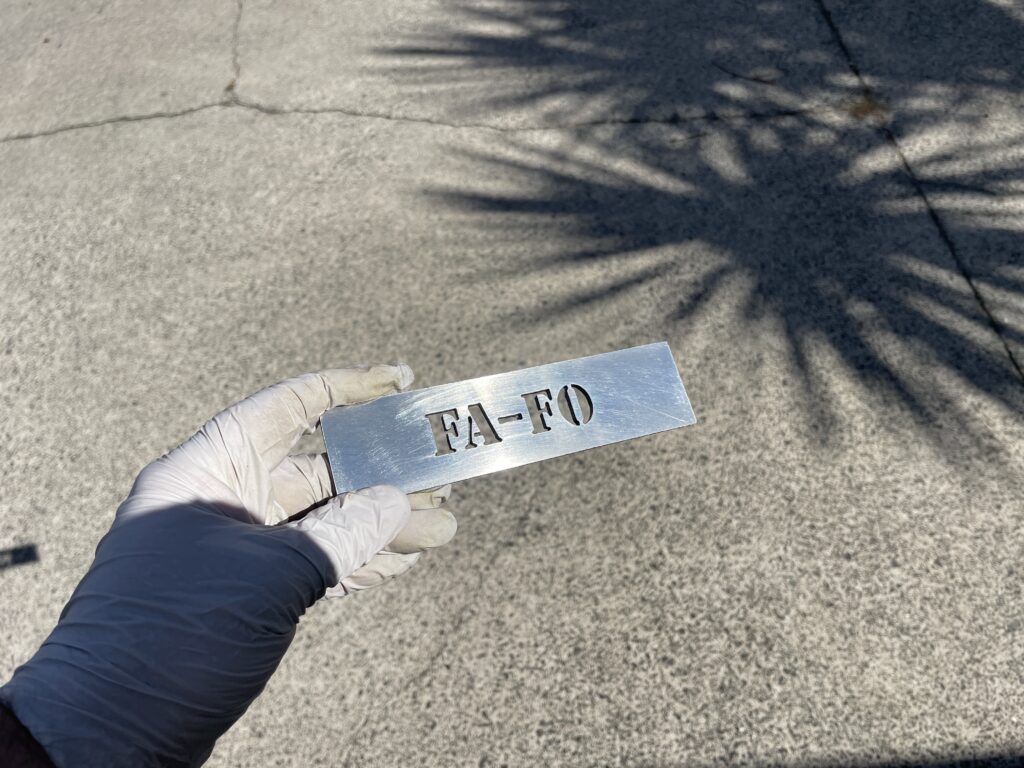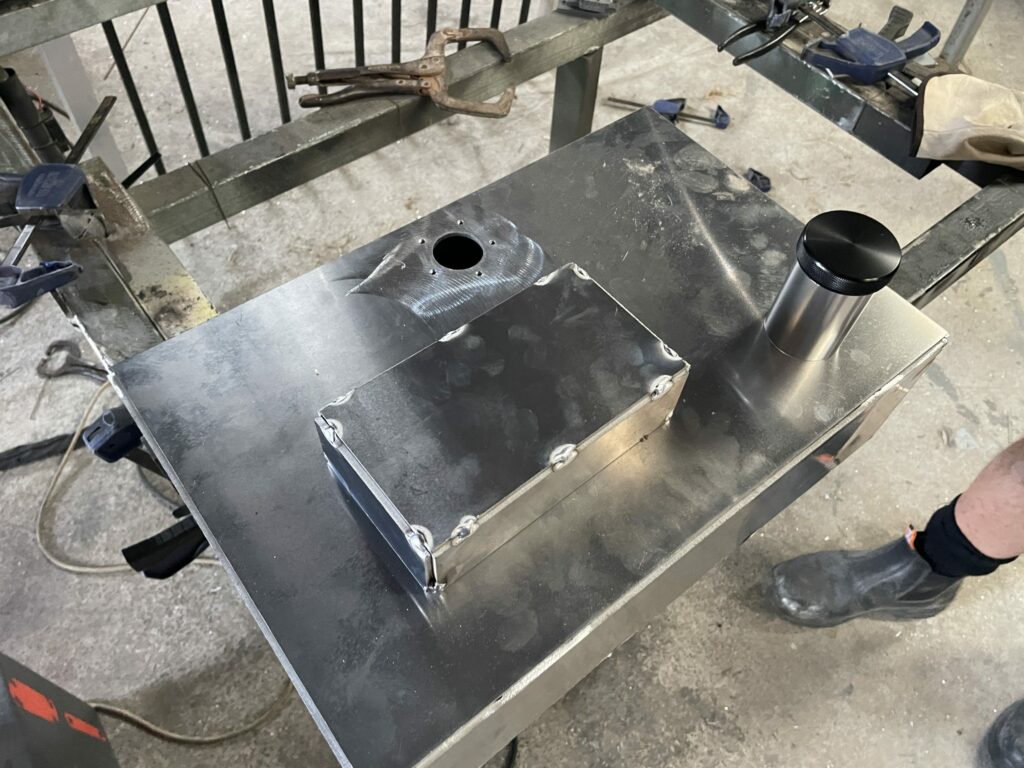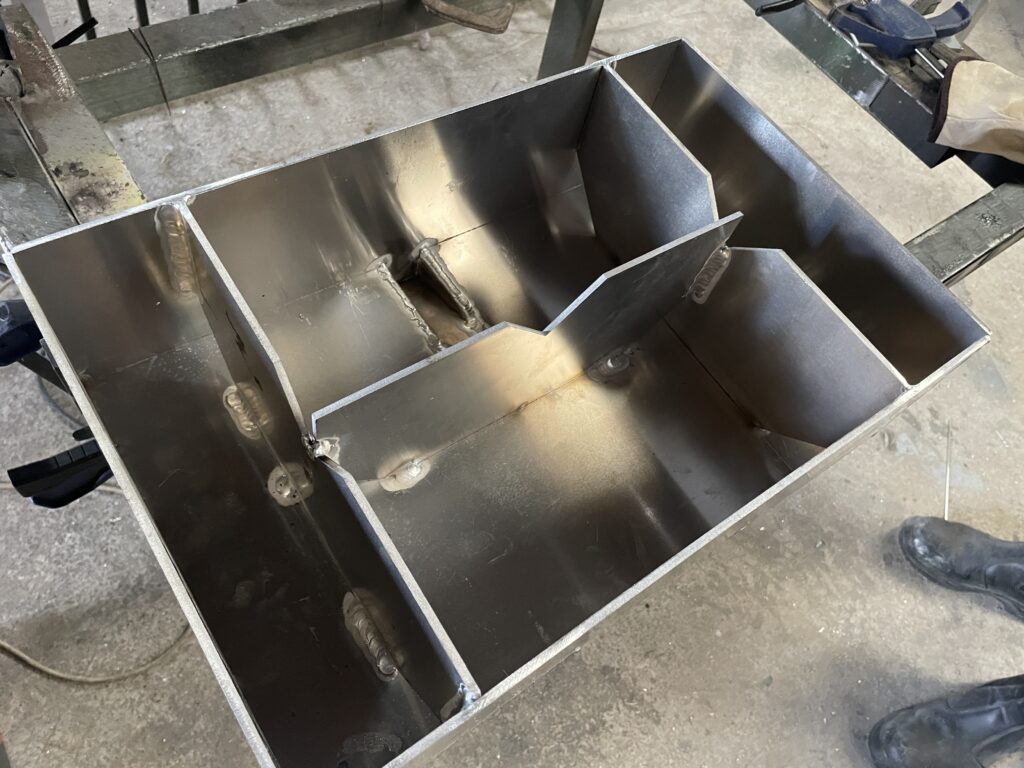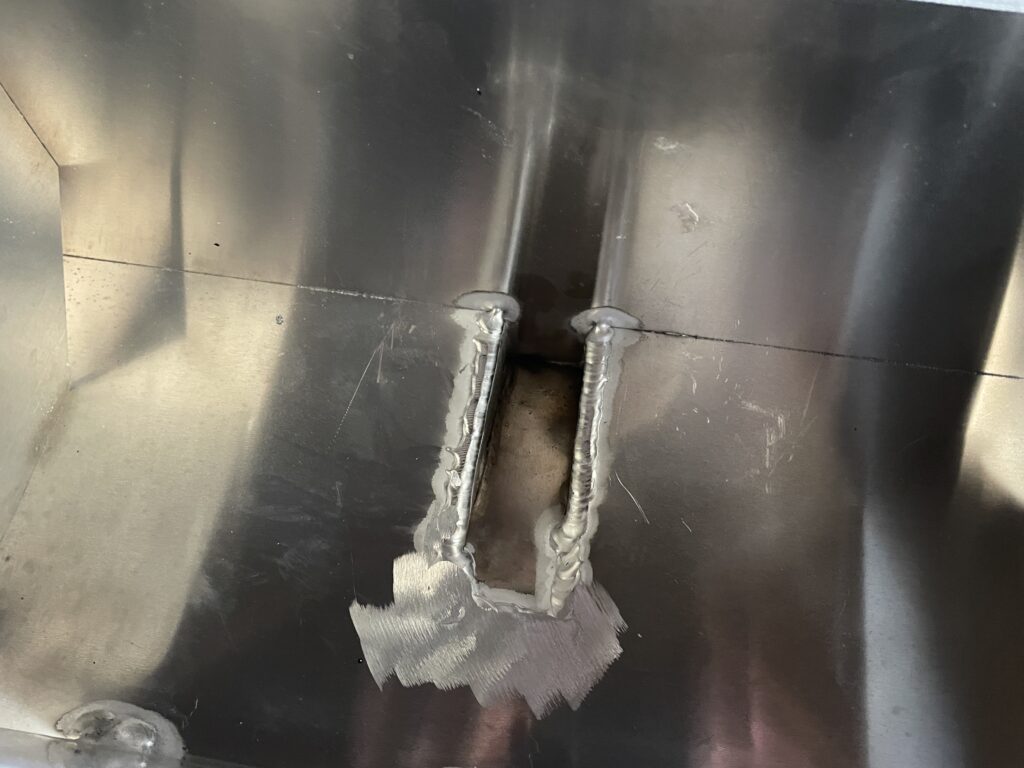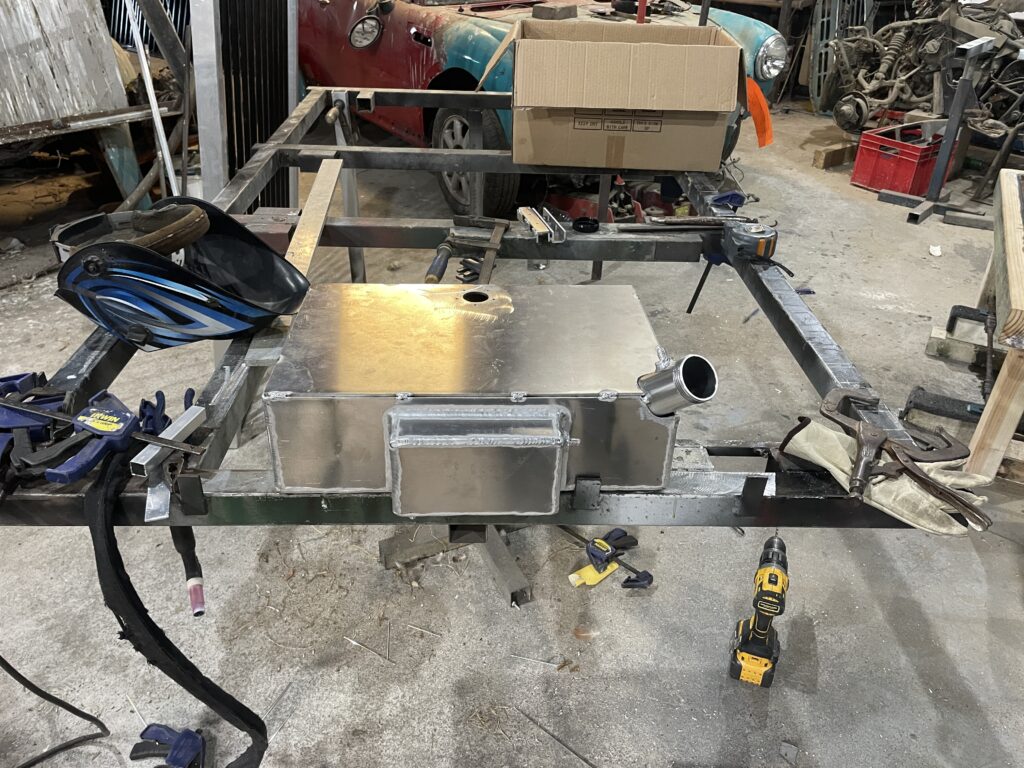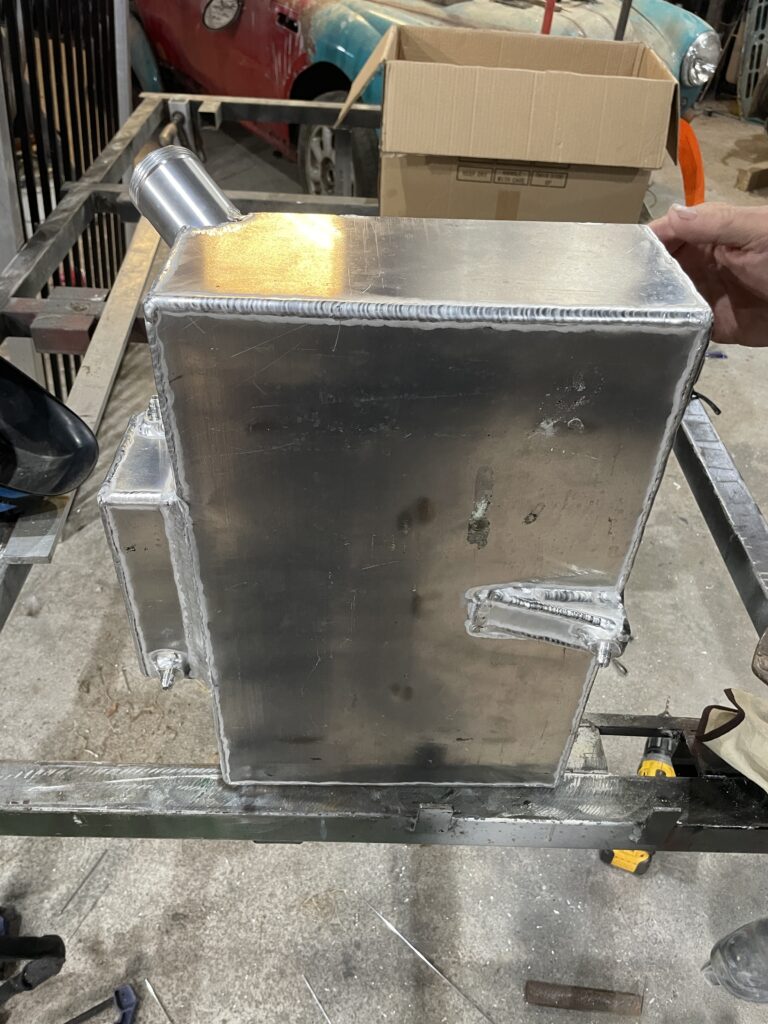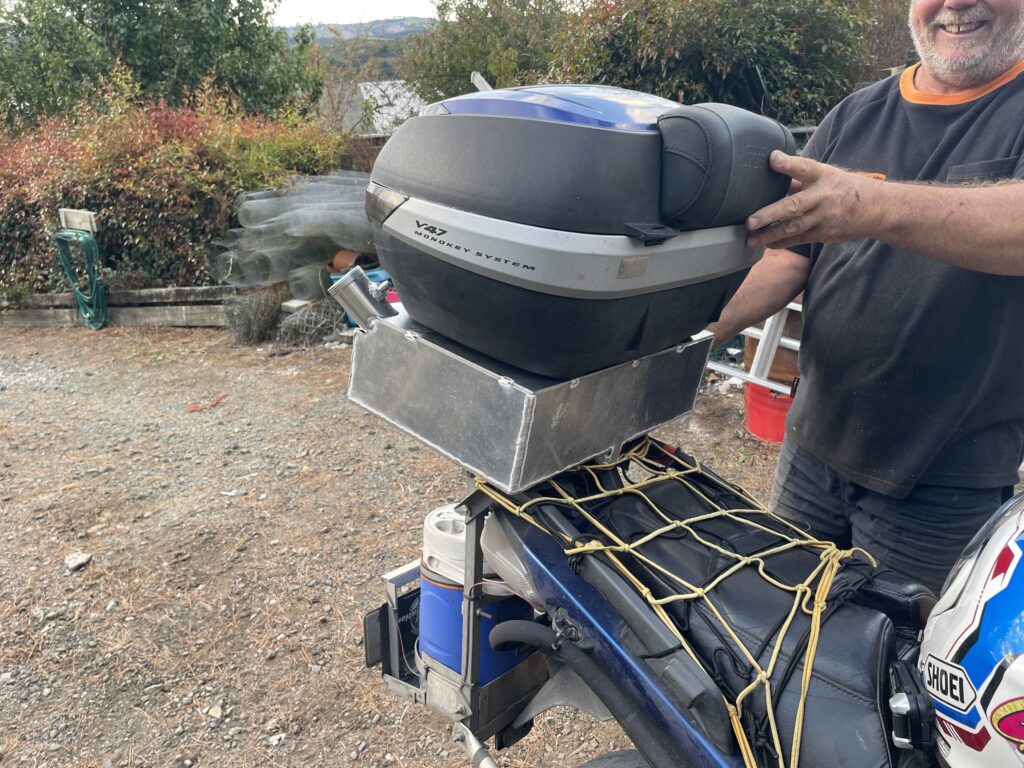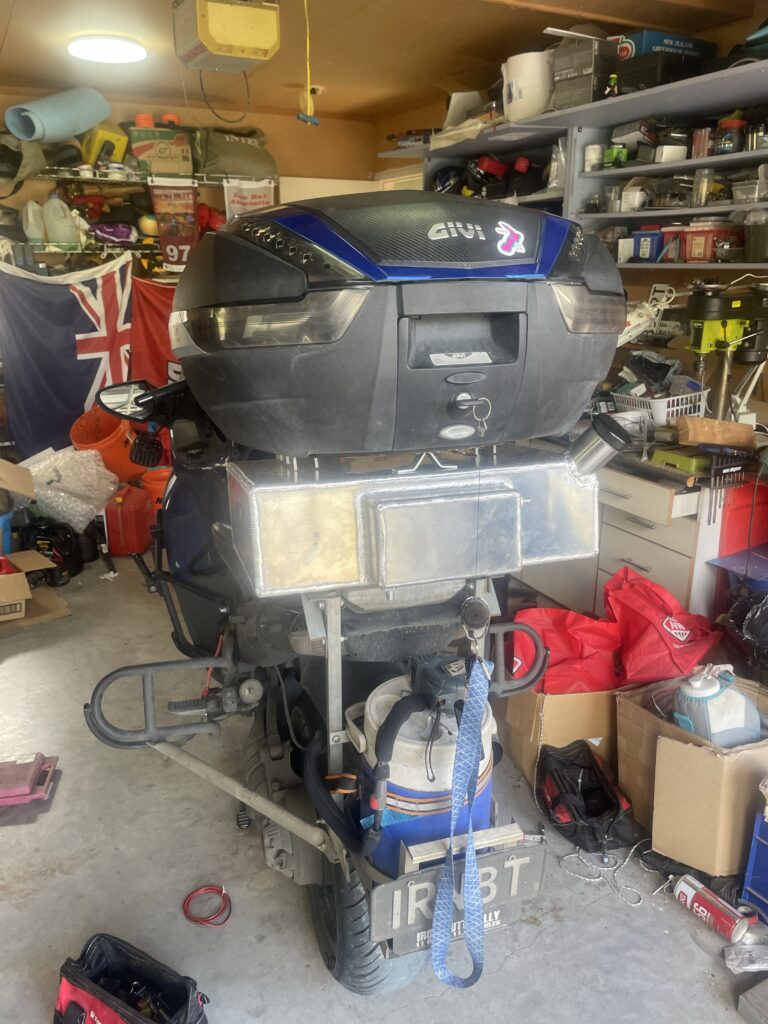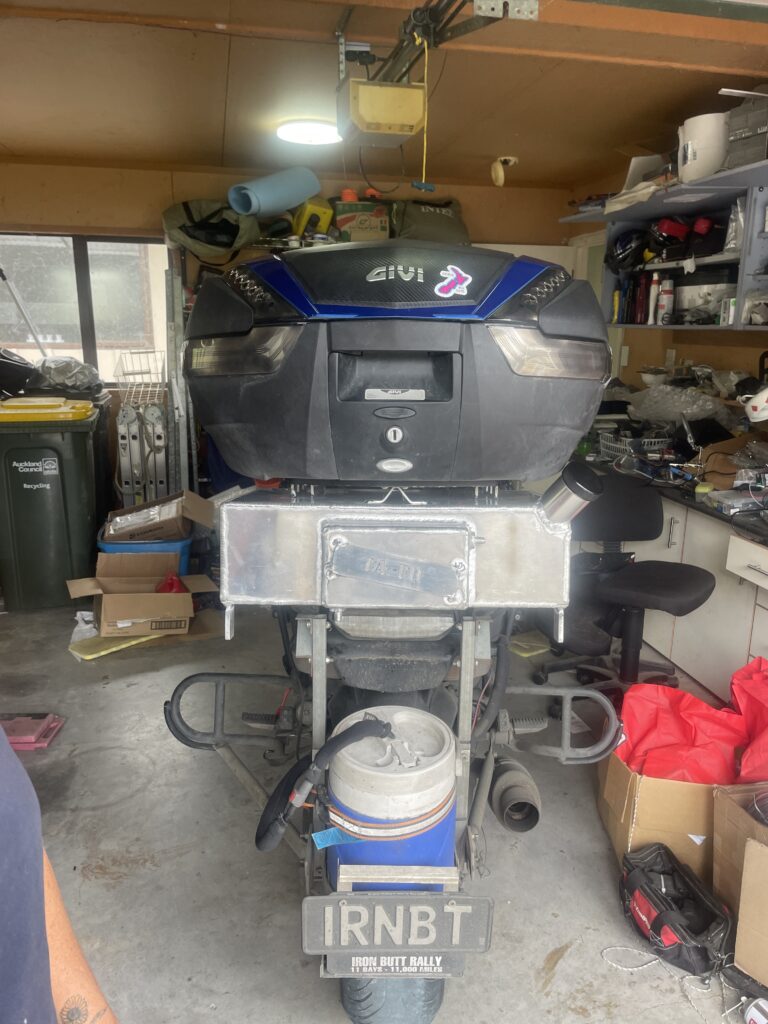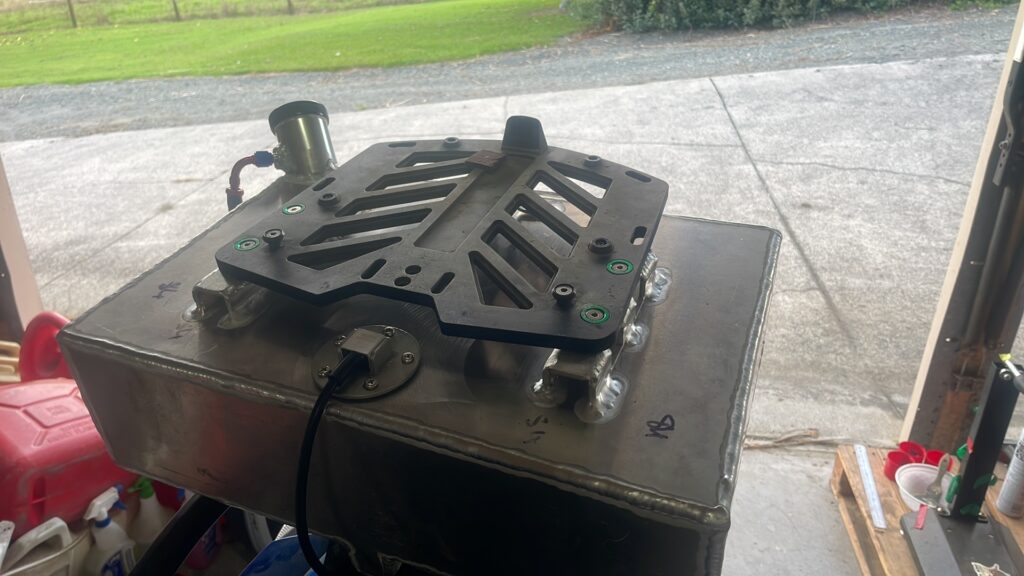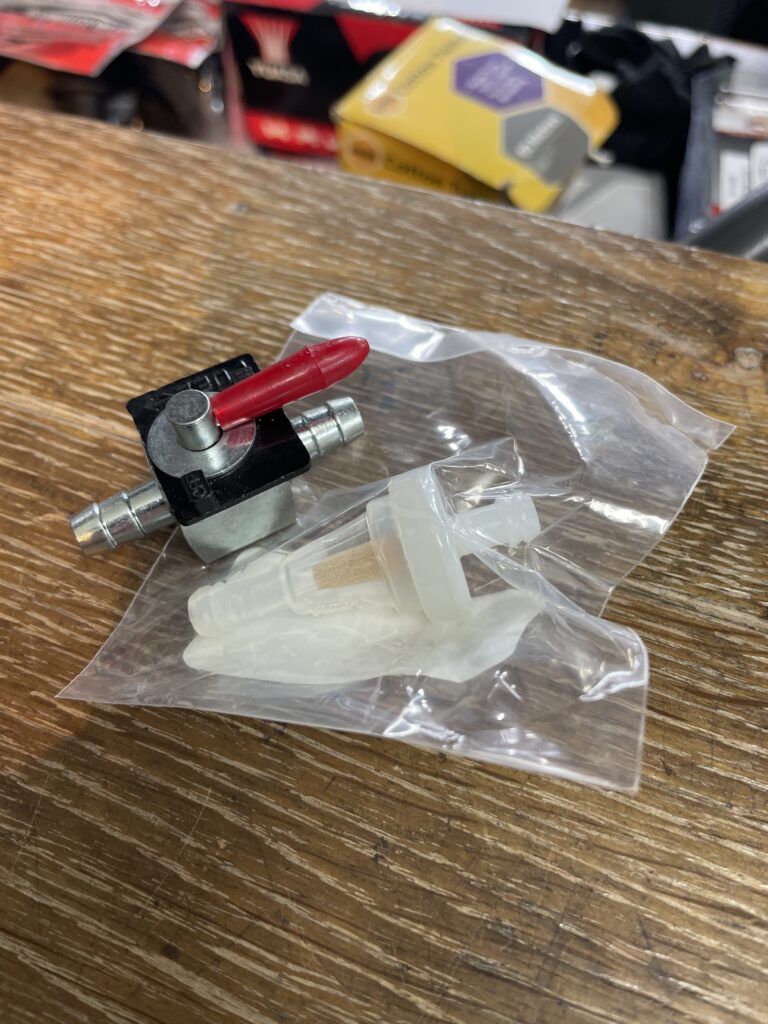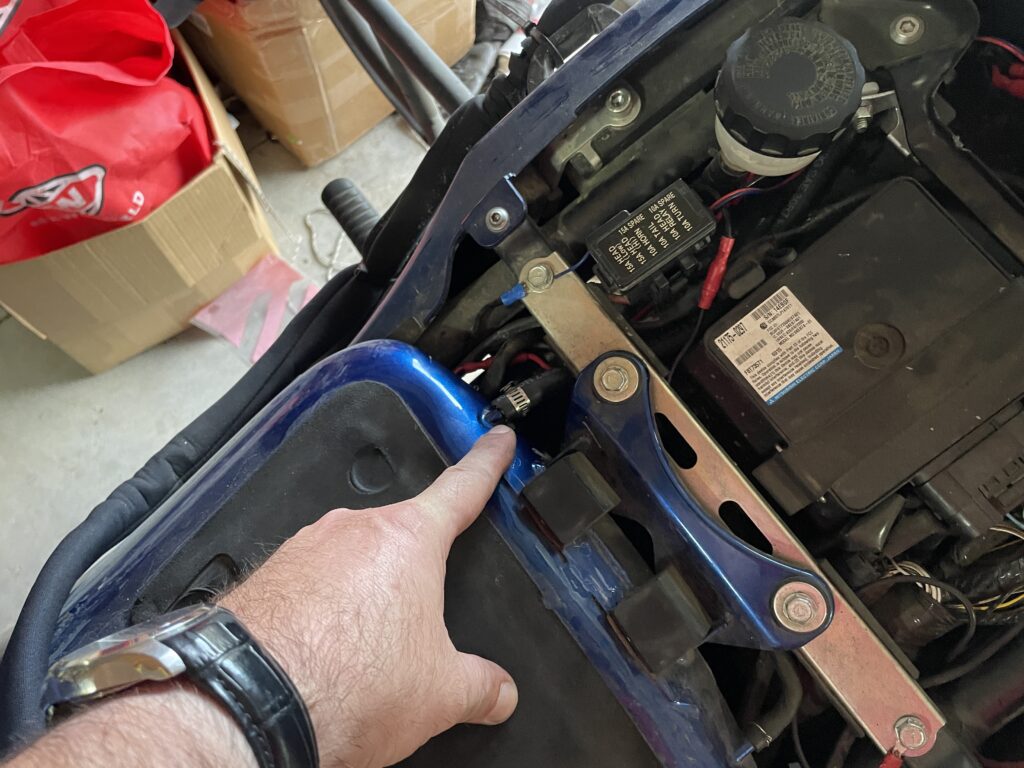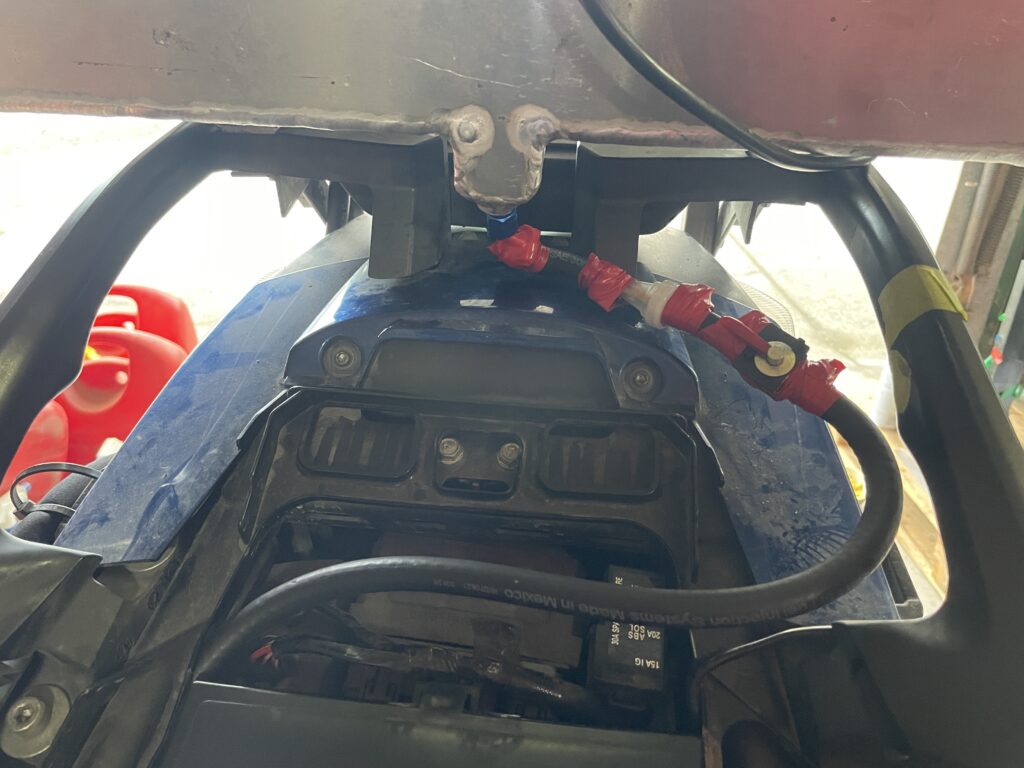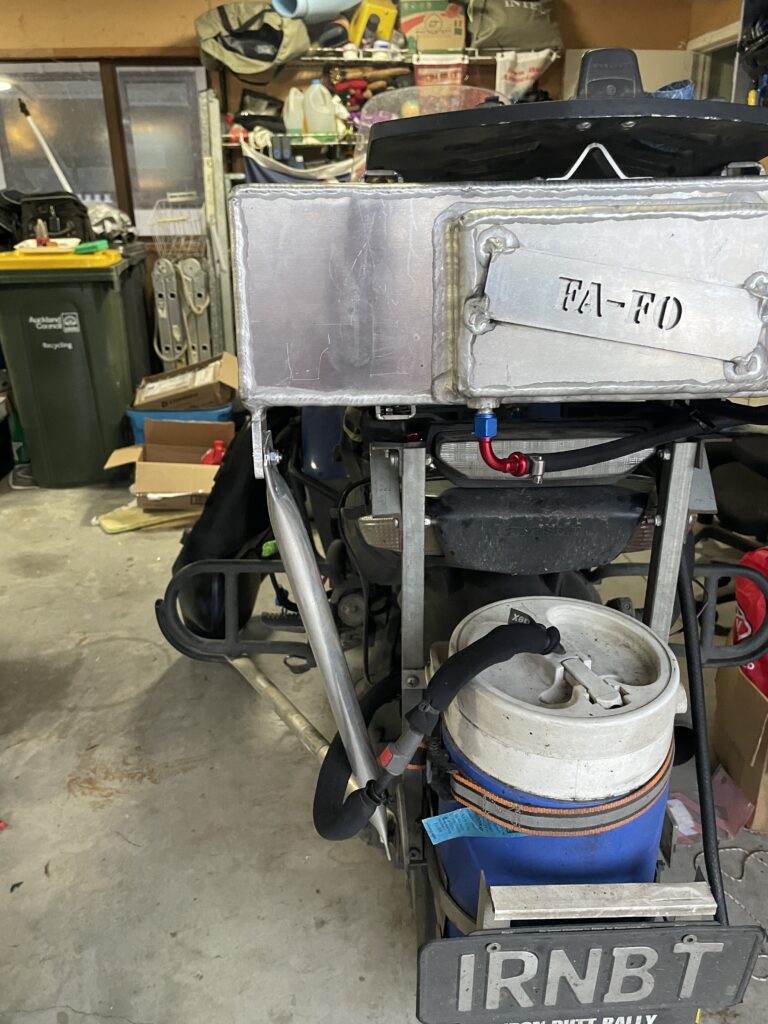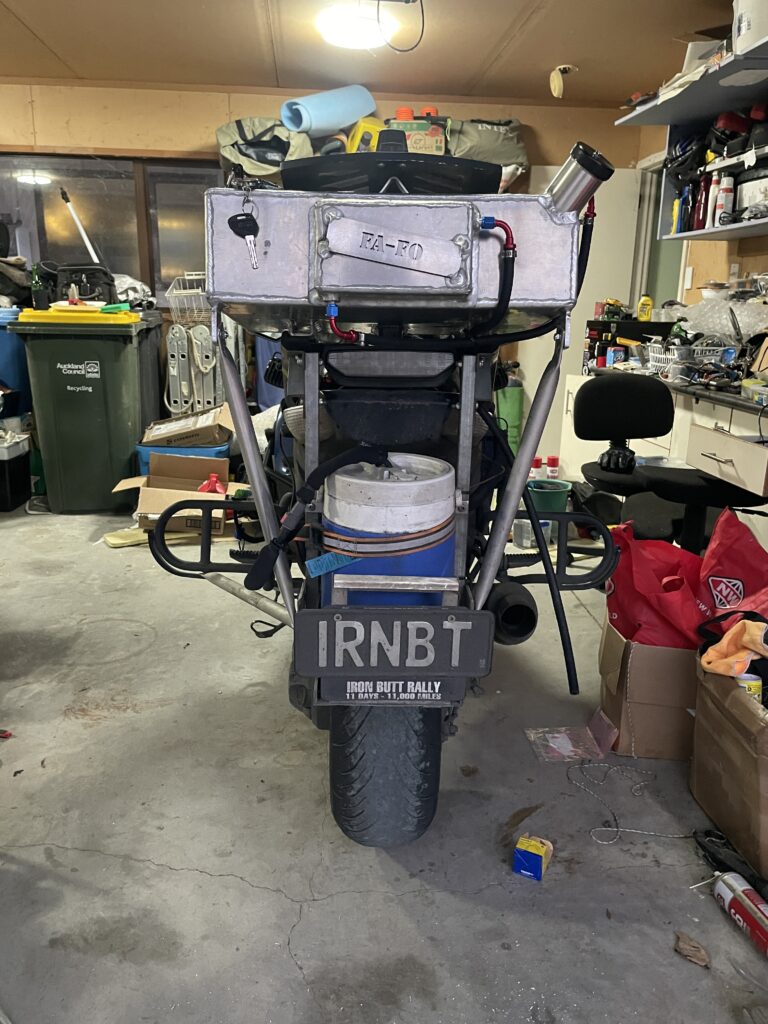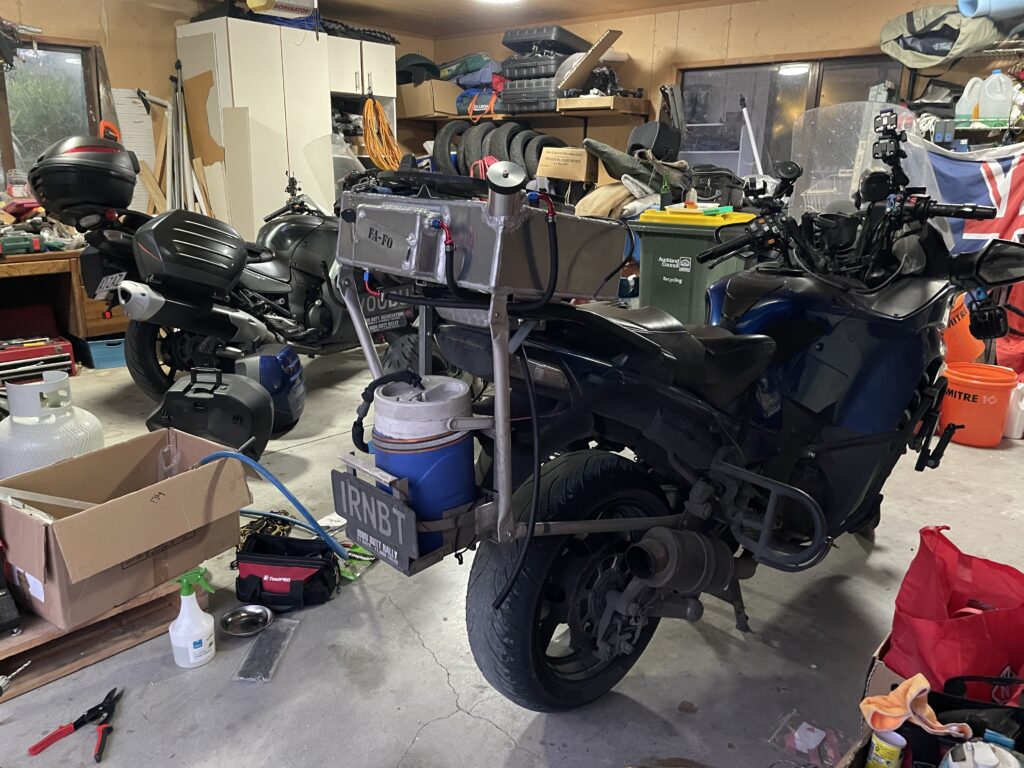Background
There is truly an enormous amount of knowledge and wisdom within the IBA community, about everything to do with Long Distance Riding and a lot more aside. When it comes to my history and touch-points with the USA based community my contacts run reasonably deep, and now also given my attendance in the SBR and IBR they also have some breadth to them too.
In preparation for the 2022 Senior Butt Rally, James Owen said to me, “Well, I don’t know if you’ve given this any thought, but I’d strongly recommend that you have an Auxiliary Fuel system for the rally”, or words to that effect. It was clear to me that this wasn’t just a lightly made suggestion, but more of a suggested requirement of his if we were to ride together. To be clear it wouldn’t have been a deal-breaker, he was clear about that, but we settled on me saying to him that I would make all reasonable efforts to have a fuel system sorted for the SBR.
Having made that commitment to James, within a very limited timeframe of about 2 months I went about trying to sort out a fuel system which I could assemble on the bike, within 3 days before leaving for the SBR. It was quite an undertaking as it needed to work, without testing and without refinement. I also needed to be able to sensibly only carry the parts with me that needed to come from New Zealand. I split the parts up and ordered bits direct to the USA, and then with the help of Steve (a friendly and helpful neighbour), we created a tow-hitch based, mounted tray to hold a standard off the shelf tank. I bought a tow-hitch assembly from Canada, delivered to the USA directly, something that had been commercially made and which should bolt straight onto the bike with minimal fuss. – That’s how we’d planned it all to come together.
Largely, it did. But not without fitting difficulties for the tow hitch rig which was either made to a less then exact standard, or which got bent out of it’s fabricated shape during shipping. A bit thanks and shout out to Dr Bill Karitis who painstakingly worked through fitting this to the bike ahead of me arriving in the USA. I understand some new swear words were formed through that fitting process! – The whole assembly had never come together before it was being fitted to the bike, and with that in mind it really did come together quite well.
I also designed and fabricated (3D printed) a fuel-tank-cap-riser which provided 3cm of lift to the cap, and a neck through which I could feed inward fuel. We played with a number of options and found that for a tail dragger, which needed to be pumped, this was the best overall solution.
During the Senior Butt Rally (SBR), we had a couple of usage issues, including some relating to the lack of a filler neck, some issues with the electronics (wire connections using shitty low temp solder joints [hot air gun joints – don’t use them]) / pump, fuel level sender etc. It never failed to deliver a full secondary tank of fuel to me, but the lack of proof / testing provided some real challenges to get this to work reliably for me. The tow hitch assembly also prevented us from simply removing the rear wheel, the whole bike needed to be lifted 2 foot off the floor (jacks and 3-4 people) to get the wheel out. – No good for the IBR.
So after the SBR was done, the tow hitch got ripped off the bike, and the rear tail dragger fuel cell removed. The IBR was always going to be 2Up for us, so I couldn’t mount this on my rear seat… We decided to forego the Aux Tank for the IBR, knowing that pre-checks etc on any other tank would be impossible for me to sort out from NZ. We simply didn’t want any of that extra stress in our Rookie year, so we ditched the idea.
Fast forward to 2024 and 2025… This summer (USA) I’m planning on riding a number of certificate rides with Dr Bill Karitis, based out of South Carolina, we’ll be travelling up to the North East, heading into Canada, then across to the West Coast while doing a Trans Canada IBA ride, we’ll be dropping down to the South West, and then across to Florida Keys to finish the SCMA 4 Corners Award. The Trans Canada will need Aux Fuel to make this as simple as possible, and there will be sufficient benefit through the 2025 IBR to warrant creating a new Aux Tank for the C14.
This time the whole thing is going to be made, assembled and tested here in NZ before I head over to the USA for this trip. We’re in the crunch zone now in terms of getting this underway.
The design
I’ve had concerns previously about the strengths of the rear mounts on the C14, where the luggage rack is mounted, it really only seems strong enough to me to hold a moderate size top box, I worry about over-filling the 47L top box which is an optional accessory for this bike. Previously I have fitted tip over bars, to these bikes, and that provides some rigid framing to which I can mount some cross-stays; which has enabled me to build up a rear-mounted hydration system which is suspended from the top box tray. This is then strengthened using those cross-stays which form a solid frame back to the bike. Having this in place made the top box FIRMER, more rigid and less susceptible to massive wobbles and movement due to bumps in the road.
Building on this, I’m now happy to look at placing an Aux Fuel cell in place of the top box rack, and then further mounting the top box on-top of the fuel cell. I’m only happy to do this with the addition of some extra stays, which will run down from the back of the fuel cell, and mount firmly into the same point that the stays hold the hydration system. This will further introduce more triangular shapes into the mix and should help to keep it all nicely supported and firm. My testing of this will be progressive, in order to build up some confidence that I’m not overloading the supportive structure onto which all of this sits.
I took advice from a number of people, including Lincoln Seals and Brian Roberts about the construction requirements, including thickness of the material and the design of baffles, as well as from Steve in terms of how the material would be best laid out in order to weld it strongly. Choosing 4mm thick aluminium plate to make the tank from, including the baffles, as that would add strength to the box, I set about finding a local company who would supply the material in plasma-cut form, and who would take my design from me for the cutting plan. I found a local company in Warkworth who offered a week’s turnaround on this job and in next to no time I had collected the cut panels from them and we were ready to go.
These are all of the cut parts, simply held together with some duct tape. It was exciting to see this taking shape even if it was just held together with tape! 🙂 I was very happy with the job which the local engineering firm had done for me with the plasma cutting, it was well prepared and very straight and true as a result. I felt that this would make Steve’s welding job significantly easier than if I had cut this up with a grinder, so overall I felt this was money well spent.
From here, the plan was to progressively assemble the tank, checking in with placements, positions etc as we went. Tacking the external walls, and the baffles was the first step, once checked Steve went ahead and did a full, clean weld job along those major edges, and along the innards with the baffles. The sump was largely done in one hit at the start since it was a fairly intricate area to build up. These photos are the best view of the baffles, their position and layout. The IBA’s minimum requirements is two baffles, so we went ahead and created four chambers with a total of three. This placement and layout was commented on before it was welded up as being suitable for our use, so we’re hoping it will be. 🙂
Roughly positioning the gear to make sure the filler neck’s angle is going to be ok….
At this point we started to pressure test the tank and found a number of small air channels around some of the fitting’s welds – like around the base of the filler neck and the breather fitting at the top of that, also around some of the minor welds for the expansion tank. All of the main welds were perfect. There was one small pinhole leak around the sump too. This is all part of the process, finding and addressing these is a perfectly reasonable thing to expect to have to do.
I also had extensive bubbling around the screw heads of the fuel sender, that’s at a low, front placement on the tank, and with the slight forward lean, it’s going to be critical to address that properly.
At this point I sourced a fuel tap, a micro fuel filter (more to act as a spy glass than anything else), and some high tensile bolts for the lower base mounting. I also bought some gasket goo to try to seal the mounting screws for the fuel sender unit.
I also stripped the innards of my tank cap out to allow it to breath more directly, out and through the aux system, this would allow the inward flow of fuel when a vacuum forms through loss of fuel head-height in the main tank. Steve returned the tank after the pinhole leaks were fixed and I attempted to goo up the fuel-sender mounting screws with plenty of JB-Weld Gasket goo. I fitted the tank back onto the bike with the fuel tap and filter in place, using the high tensile bolts this time. I also created two further aluminium stays and mounted them to the rear tabs on the tank to provide further support at the rear of the tank, and to help to limit the turning-moment experienced by the front mounting points, I think this will be a critical thing for me to have done to prevent those pillion grab handles from snapping under the turning forces which will undoubtedly be felt when the aux tank is moving up and down due to bumpy roads.
Next steps are a final pressure test, then fill both tanks and ride around for a while to see if the vacuum in the main tank sucks fuel through from the aux-tank as we hope. I am hoping not to need to add a fuel pump to this, I’m also hoping that the in-flow into the tank will work in the way which I saw it could when I was experimenting for my SBR-2022 usage… So fingers crossed.
I’m ecstatic to be at this point where I can test / develop this stage of work – HOW TO GET FUEL FROM THE BACK TO THE FRONT, reliably and as simply as possible. I’ve got around 3.5 months left to refine this from here. 🙂
